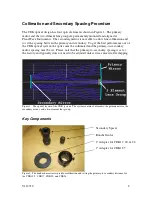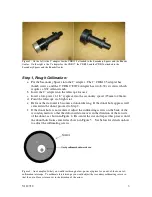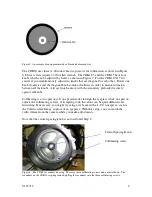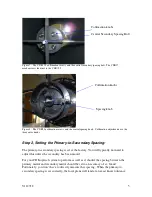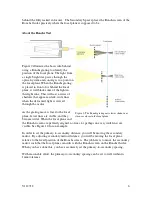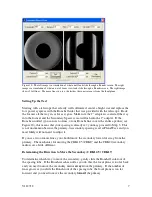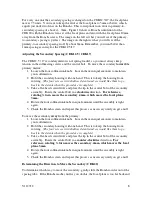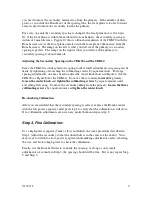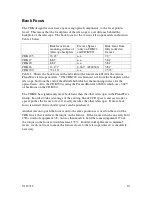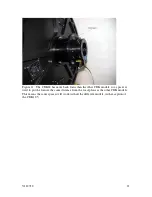
V112712
6
behind the fully racked in focuser. The Secondary Spacer places the Ronchi screen of the
Ronchi Ocular precisely where the focal plane is supposed to be.
About the Ronchi Test
Figure 9 illustrates the basic idea behind
using a Ronchi grating to identify the
position of the focal plane. The light from
a single bright star passes through the
optical system and converges to a point on
the focal plane. When the Ronchi grating
is placed in front of or behind the focal
plane, it will block some of the light in
this light cone. This will cast a series of
shadows that appear as dark, wide lines
when the defocused light is viewed
through the ocular.
As the grating moves closer to the focal
plane, fewer lines are visible, and they
become wider. When the focal plane and
the Ronchi screen are perfectly aligned, no lines (or perhaps one very wide line) are
visible. See Figure 10 for an example.
In order to set the primary-to-secondary distance, you will be moving the secondary
mirror. By adjusting secondary mirror distance, you will be moving the focal plane
relative to the fixed position of the Ronchi screen. The job here is to move the secondary
mirror such that the focal plane coincides with the Ronchi screen on the Ronchi Ocular.
When you have done this, you have accurately set the primary-to-secondary spacing.
With reasonable effort, the primary-to-secondary spacing can be set to well within its
1mm tolerance.
Figure 9: The Ronchi grating casts fewer shadows as
it moves closer to the focal plane.


